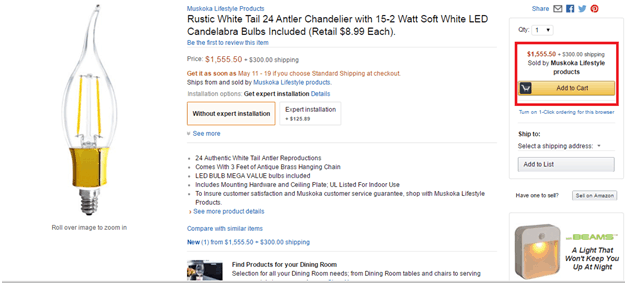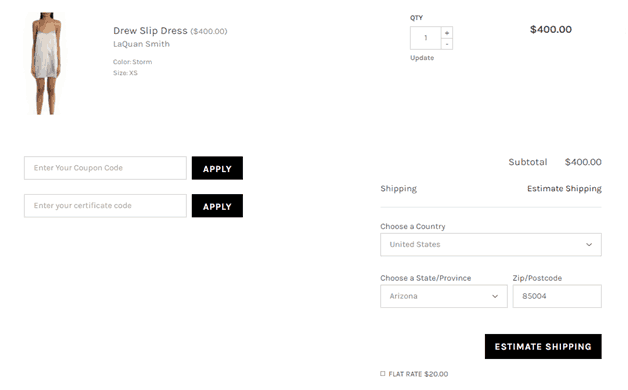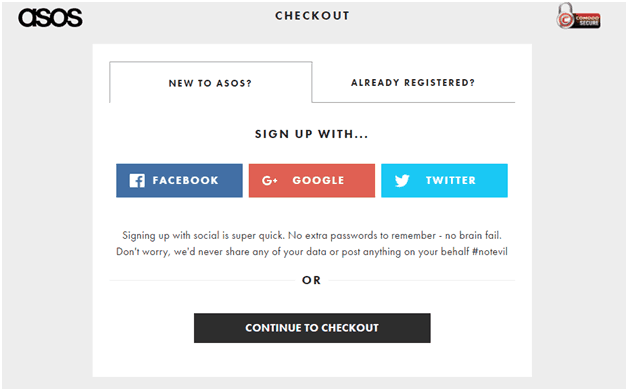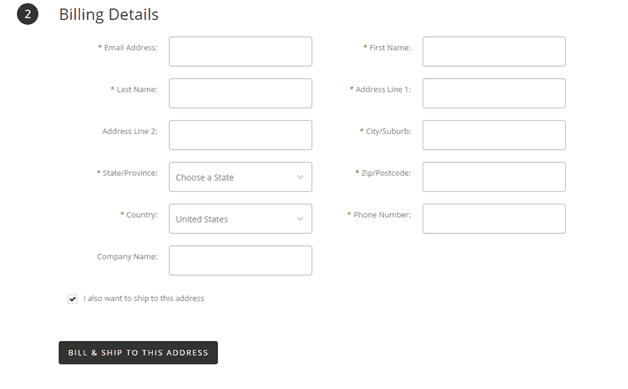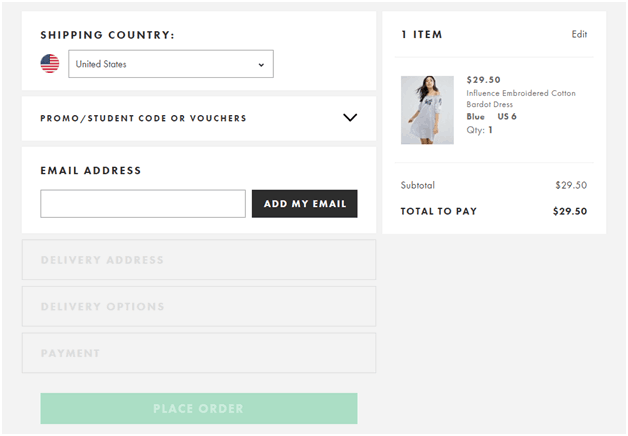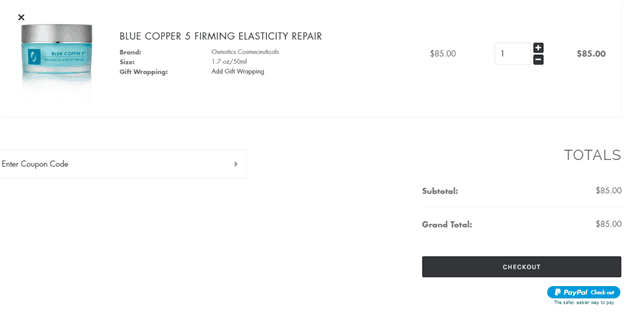You’ve been struggling to drive conversions, and have decided to analyze user behavior to understand the problem. To your surprise, you find that people are interested in your products. They even go so far as to add items to their shopping carts. The only problem is, they don’t complete their purchases.
But why do customers abandon online shopping carts? And how can you prevent cart abandonment on your website?
First of all, don’t panic, because you’re not alone. In fact, according to the Baymard Institute, the average shopping cart abandonment rate for ecommerce retailers is around 69.89%.
In this post, you’re going to learn five of the most common reasons why customers abandon shopping carts. You’ll also learn how to reduce cart abandonment on your site to boost conversions.
Table of Contents
5 Reasons for Shopping Cart Abandonment
According to the previously-cited Baynard study, here are the 5 most common reasons for shopping cart abandonment:
Reason #1: High and Unexpected Extra Charges
Shoppers find an item that they like, they consider the price and then decide to make a purchase. However, once they get to the checkout page, they see something unexpected in the payment summary.
There are several extra charges—like shipping costs and taxes—added to the original price. Which causes the total cost of the item to rise unexpectedly. This frustrates and angers many shoppers, causing them to abandon their shopping carts.
In the Barilliance study, the top reason for shopping cart abandonment was unexpected shipping costs.
The Baymard study found that 60% of people abandon their carts because the extra costs for shipping, taxes, or other fees were too high.
Another 23% of customers abandon shopping carts because they can’t see, or calculate the total cost of their orders upfront.
Shopping Cart Abandonment Solution #1
As a retailer, you can’t always waive the extra charges because it could result in a loss for you. But that doesn’t mean you have to sacrifice your conversion rate either. Instead, set realistic expectations right from the start so customers don’t face unexpected extra charges during checkout.
If you require a minimum purchase for free shipping, for example, make sure you display that information clearly and prominently on your product pages.
Even if your total order amount qualifies for free shipping on Amazon, not every item qualifies. Items that are not eligible for free shipping are normally from select third-party retailers.
Yet by clearly displaying the fixed shipping charge on the product page, Amazon makes sure customers won’t get an unpleasant surprise when they decide to check out.
Even if charges vary from state to state or country to country, you can give shoppers the option to estimate or calculate their shipping costs before they checkout.
That is exactly what LaQuan Smith does on their website. As you can see in the screenshot below, shoppers can select their country, state, or province. And then enter their zip code or postcode to estimate the cost of shipping.
This also solves another problem that causes abandoned carts – being unable to calculate the costs upfront. In addition to estimating the shipping costs, you can also provide an option to calculate extra charges, (like taxes or customs duties), so shoppers know exactly what to expect.
This also solves another problem that causes abandoned carts—being unable to calculate the costs upfront. In addition to estimating the shipping costs, you can also provide an option to calculate extra charges, (like taxes or customs duties), so shoppers know exactly what to expect.
Reason #2: Having to Register
People make online purchases because it’s quick and convenient. They don’t want to go through tons of steps just to buy a few items. Having to create a new account to complete their purchase often frustrates potential customers.
In fact, both the Barilliance and Baymard studies found that the need to create a new account was the second biggest reason for shopping cart abandonment.
Shopping Cart Abandonment Solution #2
The solution is to make it as easy as possible for customers to complete their purchases. To do so, you can add a guest checkout option or a social media signup button. You can even offer both of these options for added convenience.
With the guest checkout option, shoppers can easily complete their purchases without having to create an account. They just need to enter their email address, (and possibly their name). A social media signup button or social login option allows customers to create a new account using one of their social media accounts.
As you can see in the screenshot below, ASOS implements both. Shoppers can check out either as guests, or sign up with a social media account.
Guest checkout and social signup options simplify the checkout process. Which, in turn, help reduce shopping cart abandonment, and increase conversions.
Reason #3: Long and Confusing Checkout
Another common reason why customers abandon shopping carts is that of a long and complicated checkout process. This is closely related to the second reason because mandatory registration is typically considered one of the steps in a long checkout process.
But in this case, it’s about the entire checkout process. Which includes having to enter shipping and billing info, and the payment process as well.
Shopping Cart Abandonment Solution #3
Ideally, you should reduce the number of the form fields required for checkout and payment. Remove any fields that aren’t absolutely necessary for customers to complete their purchases.
Instead of requiring shoppers to enter their billing and shipping addresses separately, give them the option to, “ship to the billing address.” Then they will only need to fill in the additional fields if they’re shipping the product to a different address.
See how the Raven + Lily website provides this option in the following screenshot.
Additionally, you can set realistic expectations, and reduce frustrations by showing customers the progress of their checkout.
You can introduce a progress indicator, which will show shoppers which stage of the checkout they’re at, and how many steps are left. Another benefit is that if they make any mistake at any stage, they can easily go back and make the necessary corrections.
Let’s take another look at ASOS and their progress indicator.
As you can see in the screenshot above, they’ve highlighted the current checkout stage. The other stages are visible but faded. So the shopper knows that those are the stages they still need to complete.
Reason #4: Website Errors/Crashes
Another major reason why customers abandon shopping carts is that the website crashes or shows errors. In fact, one in five people abandon their carts due to this reason, according to the Baymard study.
In such cases, customers often don’t bother to go through the whole hassle of adding products to their carts and checking out again.
Shopping Cart Abandonment Solution #4
It’s natural for customers to leave after a site crashes. And as a brand, you cannot expect people to keep trying to make the purchase until the checkout page opens. So what can you actually do to avoid this issue?
You can ensure that your website is free of bugs and functioning smoothly. You can hire a team to continuously test your website and fix any errors quickly.
Keep track of common issues, like verifying that all plugins are compatible with all browsers and testing the code. Also, ensure that there is enough memory and bandwidth on the server.
It’s also important to reserve extra capacity to deal with traffic spikes. Otherwise, you might lose out on those additional potential conversions.
Use these tips to improve the conversion rate of your website.
Reason #5: Payment Security Concerns
You may have a secure payment gateway with no chance of your customers’ payment information being compromised. But if your shoppers don’t know that, they may hesitate to enter their card details and eventually abandon their carts.
According to the Baymard report, concerns about payment security was one of the biggest reasons why people abandon their carts. The report found that around 19% of shoppers abandoned their carts because they didn’t trust the site with their financial information.
Shopping Cart Abandonment Solution #5
Shoppers don’t want to risk having their card details compromised and that’s only natural. But what can you do to fix this problem? How can you prove to them that they can trust your site and won’t have to worry about any security issues? The answer lies in trust seals, such as the ones from PayPal, Norton, McAfee, SiteLock, etc.
In fact, a case study conducted by Conversion Fanatics found a massive increase in conversion rate after adding trust seals on the checkout page. According to the study, the trust seals resulted in a 28.2% increase in conversions among new customers and a 19.2% increase in successful orders. The trust seals also resulted in a 71.1% increase in revenue per visitor.
Displaying a relevant trust seal next to the CTA button usually relieves customer anxiety. Run a test and compare the conversion rates between the page with a trust seal, and the one without. This will help you determine whether or not the addition of a trust seal works for you.
You can also give customers a PayPal checkout option like Osmotics has done in the screenshot below.
Conclusion
Now you know the most common reasons why customers abandon shopping carts. And how to reduce shopping cart abandonment and boost conversions.
You will likely still have at least a few abandoned carts, even after implementing the solutions above. For those cases, you can send shoppers carts abandonment emails to encourage them to come back, and complete their purchases.
But the combination of shopping cart abandonment solutions above should help prevent the majority of your shoppers from abandoning their carts in the first place.
Got any questions about the tips above, or anything to add? Please share them in the comments below.

